
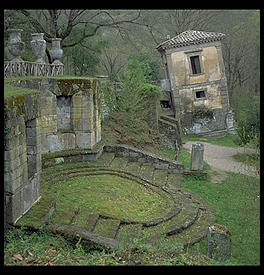
Surveying new medium format cameras, one finds the following: ancient mechanical mechanisms controlling things more accurately and reliably done electronically; no exposure meters unless one is willing to use a prism finder; cumbersome dark slides and film loading; pre-War industrial design.
The Rollei 6008 (and its sibling, the cheaper 6003) represents a milestone. Combining solid engineering, old ideas from the 35mm world and dozens of elegant and simple original ideas, Rollei built a machine that facilitates creativity and a high percentage of useable shots.
The 6008 is a 6x6 cm. camera in the mold established by Hasselblad in 1948. The camera is a box containing a mirror, motor drive, xmeter, some controls and displays and a microcomputer. Lenses, film magazines and viewfinders are interchangeable. Each lens contains a leaf shutter and diaphragm electronically controlled from the camera body.
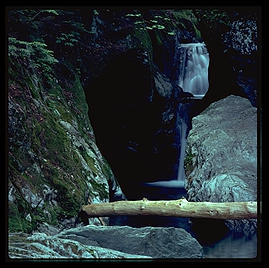
A comprehensive array of lenses for the 6008 is available. There are no mechanical linkages between the camera and lenses; all information is communicated through ten gold-plated contacts. Almost all Zeiss lenses available in Hasselblad mounts are also available with Rollei mounts and shutters, making for a line of 10 lenses with focal lengths from 40mm to 500mm. Expect to get reamed on the price, though. For example, in July 1995, B&H Photo listed the Zeiss 60/3.5 for the 'Blad at $2200 and for the Rollei at $3650. The premium on a Zeiss 40 was $2000; on a Zeiss 250/5.6., it was $1000 more for the Rollei mount.
Schneider makes a line of lenses for the Rollei as well. The most interesting are super fast lenses, e.g., an 80/2, a 180/2.8, and a 300/4 ($4500 to $6500 at B&H). I personally owned the Zeiss 50/4, Schneider 80/2.8, Zeiss 120/4 macro, and Zeiss 250/5.6. The Schneider was the sharpest lens and a joy to use, but it has been discontinued. The 120 was disappointingly flare-prone and delivered low contrast results even in the studio with a white background. I initially was very taken with the Zeiss 50 (equivalent to a 28mm on a Nikon) but after the Nikon 20mm spoiled me into going wider and wider in 35mm, I found it constraining and the perspective uninteresting. Note that the Zeiss 50 for the Rollei is $3092 and does not incorporate a floating element; the 'Blad 50 FLE is $2481 and presumably the floating element leads to dramatically better near-far shots.
[Old Rollei 6006 lenses, some of which you can buy relatively cheaply used, work on the 6008, but not very well. Metering modes and finder displays do not all work, but worst is the loud click the lens makes stopping down before each shot. This click gives human subjects enough time to flinch or blink. The newer "PQ" lenses for the 6008 do work nicely on the 6006.]

Film magazines are available for 120, 220, 70mm, and Polaroid film. Square 6x6 and horizontal 6x4.5 formats are offered. The film magazines are one of the best features of the Rollei system. Moving a single handle rolls the dark slide within the magazine, simultaneously protecting the film and mechanically enabling the magazine to be removed. Each film magazine contains an ISO dial that couples to the 6008's meter. If one is using autoexposure, grabbing a shot with a different emulsion takes seconds and there is no possibility of exposure error, dropping a dark slide or other contretemps. The Polaroid magazine lacks the sophisticated laminar dark slide but is otherwise functional. In general, Rollei makes mid-roll film changing easier than any other camera.
Rollei's windowshade dark slide system requires that the film be pushed back and forth when you are changing magazines. This apparently makes it impossible to use simple mechanical registration for film winding. Some kind of electronic encoder wheel is used to see if the film has been advanced far enough. This never works "well" in the sense that frames are evenly spaced, like they are with a 'Blad or even a cheap Fuji folder 645. It seldom fails altogether, in the sense that frames overlap (maybe 1 out of 4,000 frames for a working magazine) a few mm, but can be irritating when you're trying to cut down negs. One of my three backs was persistently bad about film overlapping and required several warranty repairs to keep the problem to a minimum. This can be irksome when you consider that a Rollei back costs $1000, versus $650 for a 'Blad back or $750 for a Fuji 645 that can take 120 or 220 and they throw in a lens plus a meter.
[You can save money by getting a used Rollei 6006 film magazine, but the 6008
assumes ISO 100 film, necessitating use of the exposure compensation dial on the
camera body with non-ISO 100 emulsions.]

A motor drive on a 12-exposure camera is surprisingly useful. Photographing models with available light, the 2 fps (2.5 on the Integral) motor drive captures subtle expressions. Automatic windup to frame 1 and windout at the end of each roll are convenient on 20-roll days. The motor drive prevents inadvertent double exposures and unused frames, a classic way to lose with a Hasselblad when you change film magazines before winding up to the next frame. There is also no winding crank on the film magazine for the inexperienced to mistakenly operate, another Hasselblad perennial. For intentional multiple exposures, a convenient knob disengages the camera's winding gear; the motor still runs to operate the mirror, but the film and film counter do not advance.
If one isn't completely sold by the laminar dark slides and motor drive, Rollei also has $85 film inserts that make loading new film as as fast as with a Nikon. The 6008 is a tall camera so film simply travels from one spool to another without doubling back on itself as it does in a Hasselblad or Bronica magazine. One puts the roll of fresh film on the empty side of the insert (where the last roll was pulled out) and winds out enough film onto the takeup spool until an arrow on the insert lines up with an arrow on the film. One finally drops the insert into the film magazine. This operation is itself considerably quicker than loading most other medium format cameras, but what is truly effective is preloading several inserts. Each insert has a slot into which a folder film box top can be inserted. The box top will then be visible through a window in the film magazine. Each insert comes with a reasonably light-tight case so that film can be loaded well in advance.
[Bob Solomon of HP Marketing claims that the Rollei film transport system gives sharper results than with the Hasselblad-style folding over of the film. The film is pressed up against some rails in the body so that the film plane is independent of which back is installed. In a 'Blad or similar, the film plane is in each back, which is why the insert has to be precisely matched to the back itself to get maximum sharpness.]
These images are from my Sierra Mountains series.
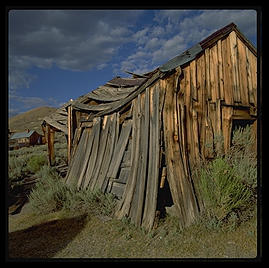
Metering with the 6008 is straightforward. A large knob on the left side of the camera selects three modes: center-weighted; 1% spot; automatic average of five spot readings. Don't plan to point and shoot in center-weighted mode. Rollei simply averages and weights toward the center and bottom of the frame. Results are not up to the standards set by 35mm SLRs with their databases of the right exposure for thousands of "common patterns". Expect to use the conveniently-placed exposure lock, the spot meter, or metered- manual in any moderately complex situation. Shooting aperture and shutter speed are displayed digitally at all times. Match-LED metering is displayed in 1/3 stop increments and aperture, shutter speed and exposure compensation are both adjustable in 1/3 stop detented increments; this camera was built for the professional shooting color transparency film. One caveat: the older 6008 (non Integral) meter is only sensitive down to EV3 (ISO 100 film, f/2.8 lens), a pathetic performance compared to 35mm SLRs. At ISO 1600, that is an exposure of 1/15th of a second at f/2.8, a shot that might not even require a tripod. The 6008 Integral, introduced in late 1995, goes down to EV0.
One area where Rollei is head and shoulders above the 35mm crowd is the manner in which automatic exposure is selected. Rather than a complex display and a multi-function dial, Rollei added an "A" setting to aperture and shutter speed dials. Select 1/125th and f/8 and you get metered manual. Move the aperture dial to "A" and you get shutter priority autoexposure. Move the aperture back to f/8 and the shutter speed to "A" and you get aperture priority. Move both to "A" and you get total automation. Note that the 6008 has no idea what focal length lens is mounted, so program autoexposure doesn't shift to faster shutter speeds with longer lenses. No matter what mode you are in, the viewfinder LEDs always show you the shooting aperture and shutter speed.
This parade of technology is powered by a 9.6V NiCd battery. The camera becomes a doorstop when this runs down, which is after about 300 exposures in my experience. A low battery warning appears about 20 exposures before death and swapping in a spare battery takes about 10 seconds. Spares are compact and cost about $165. An amateur might be able to get by without one since a 15 minute charge is good for 50 shots. I used the camera extensively in subfreezing temperatures and never had any trouble with the batteries. All the controls are easily operating when wearing winter gloves. Note that NiCd's work better at low temperatures than disposable batteries.
Viewing is through the standard collapsible hood, 45 or 90 degree prism finders or a magnifying hood. The view is bright in the Rollei tradition. The standard focusing screen includes a central split image, microprism collar and a 1 cm grid of fine lines for framing. Four other screens are available, but none are marked with precise 8x10 print proportions, which would be helpful for those who like to crop in the viewfinder.
No matter which finder and screen you use, the LED displays are visible and read correctly; the microcomputer electronically mirrors all displays to compensate for the installation of a prism finder. I personally find composing a picture with the waist-level finder extremely effective. Yet Rollei is the only 6x6 SLR manufacturer that combines metering with waist-level viewing. The 6008 is also the only 6x6 camera to display aperture and shutter speed in the viewfinder. The LEDs also signal the use of exposure compensation, meter lock and spot metering.
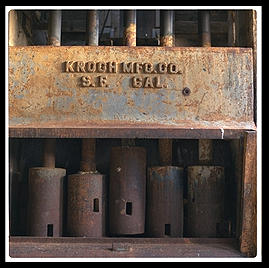
I shot several thousand rolls over four years with my Rollei 6008 system. It got rained on by sand for six hours in an Arizona slot canyon, splashed with South Pacific surf in New Zealand, handled by hamfisted photography students in a course I taught at MIT, and knocked around in an advertising photo studio. I feel that it is rugged enough for any professional application and 48-hour service is available in New Jersey.
Every feature on the camera has been useful to me on a regular basis. Every electronic bell and whistle has turned out to be practical. The only feature that I never used was the motor drive's autobracketing settings. Autobracketing (up and down 2/3 stop) only works with autoexposure. Whenever a image has been important enough or complex enough to warrant bracketing, I have been using studio strobes or metered manual. Nor do I frequently use the multi-spot metering mode, preferring to average in my head.
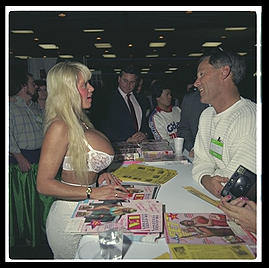
Flash photography with the Rollei/Metz C70 adaptor/Metz 45CT-5 combination is disappointing after one has experienced the joys of the Nikon flash system (even before the D metering of the N90). The film speed set on the film magazine does not affect the exposure; only the film speed set on the C70 adaptor. So changing emulsions is no longer such a breeze. Furthermore, I found that chromes were consistently 1/3 to 1/2 stop underexposed with the C70 set at normal film speed. The Metz has a slightly higher guide number than Nikon and Canon top of the line flashes but the Japanese flashes usually have better reach since they've zoomed to match the lens coverage.
When I use a modern Canon or Nikon, I often like to use one hand to hold the flash off-camera and the other to autofocus and shoot. You can't do that with any medium format camera.
Two good things about the Metz/Rollei: TTL exposure is nice for macro work and fill flash is simple. To fill one stop under ambient, simply throw the camera into aperture priority autoexposure. The shutter speed will be set by the ambient light and won't make any difference for the flash, since the leaf shutter syncs at any speed. Set the film speed on the C70 adaptor to twice whatever is set on the film magazine (so the flash "thinks" the film is twice as fast as the camera thinks). The flash will therefore always be one stop under. This doesn't work with ISO 400 film, though, because the maximum speed settable is 400 so you can't set 1600 for two stops underexposure, for example. The 6008 Integral allegedly has a fix for this.
I can't resist showing some more of my photos from the Consumer Electronics Show in Las Vegas (back when I was stupid, I engineered a product that was exhibited at CES; it so happened that our booth was right next to the prerecorded video porn section).
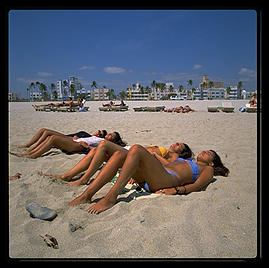
Included with the 6008 is an "action grip" that facilitates one-handed operation by right-handed photographers. This small handle plugs quickly in or out of the shutter speed dial when the shutter speed dial is set to a special position. The grip has a camcorder-like strap, cushioned with leather, that goes around your fingers. Rotation into any one of four positions is possible. A shutter release and meter lock button fall easily to hand, as does the camera power/motor drive mode switch. The grip changes the way you use this camera: you can hold the camera all day with one hand, yet still fit the camera into a gadget bag. The only other medium format SLRs with this ease of handling are the Bronicas with speed grips. If you go for the 6003 package (a "bargain" at $3600 with 80/2.8 lens), make sure you spring for the grip, which doesn't come with it.
Rollei offers the advantage of bayonet mount filters, which are such a convenience it is a shame that they are not more popular in the 35mm world. Prices for Bay VI filters, which incorporate ball bearings in their mounts, are shocking -- even more expensive than Hasselblad Bay 60 filters. Heliopan filters are the most reasonably priced and are superb optically. I frequently resort to "cheapo" B+W 67mm filters with a Heliopan adapter. At least most of the lenses take Bay VI filters, exceptions being the 350mm and 500mm, the super fast Schneider optics, the perspective control lens, the zooms and the 40mm.

Macro work with the 6008 is a pleasure because of the all-electronic lens/camera coupling. Extension tubes, bellows and lens reversing ring all contain no linkages and all preserve every automatic function. The TTL ambient and flash metering come in handy here. I would often go into the woods with a 6008, 120 macro lens and 34mm extension tube. However, Nikon's floating-element macro lenses (infinity down to 1:1) and incredible flash systems made my Nikons preferable for most macro applications, though I suspect Rollei's new Schneider macro lenses are vastly better than the Zeiss 120/4 I was using.
After four years, the only annoyances I really couldn't adjust to were the following:
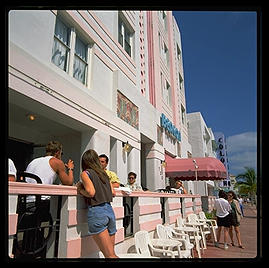
The bottom line: Is a 6008 system worth buying? Before taking the plunge into any medium format system, one should ask oneself if 35mm or 4x5 equipment wouldn't actually be better. For architecture and tabletop work, a used $500 4x5 outfit is unsurpassed. Low dispersion glass 300/2.8 lenses and super wide angle lenses for 35mm cameras facilitate some fascinating perspectives. If your final product is some sort of multimedia work, keep in mind that a PhotoCD scan for a 6x6 image is 7 to 15 times the price of a 35mm scan.
If you decide that you must have a medium format camera, consider whether you want to shoot 645, 6x6, 6x7, 6x8, 6x9, 6x12 or 6x17. Michael Freeman's Medium Format Manual includes an excellent comparison of different aspect ratios. Forced to choose one, I would choose 6x6 because of the convenience of waist-level viewing without ever having to rotate the camera or film magazine. I enjoy the flexibility in cropping and the process of experimenting with different crops on a light table. Remember that a rectangular print can be pulled out of the square negative at any angle and still cover a large percentage of the image. And a lot of shots just look better square.
If you're sold on 6x6, you're probably debating whether to get a Rollei, Hasselblad, or Bronica. I don't have enough experience with Bronica to say anything, but I know that Hasselblad is a more convenient system for certain applications. Standard accessories facilitate such applications as microscopy and aerial photography. The same film winding knob on the back of each magazine that novices mistakenly wind and waste film becomes useful when one wants to leave space between frames for registration pins. On the other hand, there are areas where Rollei shines. A standard housing and extensive automation make Rollei the choice for underwater photography. With the mirror prereleased, the time from shutter release to exposure is an electronically-controlled 3 msec. on a 6008, thus making possible motion studies that would be extremely tedious with a mechanical camera.
| Rollei | Hasselblad 500 series | |
|---|---|---|
| meter | center-weighted, spot and multi-spot meter in body | center-weighted meter in $1500 meter prism |
| shutter | electronically-controlled 30 to 1/500th of a sec, 1/3 stop increments, up to 1/1000th with some lenses, longer times with expensive auxiliary equipment | mechanically-controlled speeds 1 to 1/500th, full stop increments, must hold down shutter release during exposures longer than 1/4 sec |
| film transport | built-in motor drive | optional motor driven model |
| handholding | easy with action grip | moderately easy to handhold |
| engineering | electronic mechanisms that never need adjustment, but fail catastrophically | mechanical mechanisms that need regular maintenance that usually fail gracefully |
| battery | constant reliance on custom NiCd pack | none needed |
| changing backs | brilliant dark slide design | standard (cumbersome) dark slide |
| changing film | drop-in inserts | tedious |
| resale value | fair | great |
| automatic exposure | aperture, shutter and program AE | no meter coupling of any kind |
| film backs | 6x6, 6x4.5 horizontal 120 and 220 backs, 6x6 70mm, 70mm databack and Polaroid back | 6x6, 6x4.5 horizontal and vertical 120 and 220 backs, 6x6 70mm, 70mm databack, Polaroid back, sheet film back, 35mm panaromic back |
| viewfinder info | full information; f-stop and shutter speed to 1/3 stop, reminders of mexter mode, meter lock and exposure compensation, flash ready light and battery low indicator | flash ready light |
| service | 48 hours in New Jersey | walk-in in most big cities |
| film ISO->meter coupling | film backs keyed with ISO data, exposure adjusts automatically | must remember to reset ISO on meter prism when swapping film backs |
| lens/camera coupling | electronic, so macro accessories are simple and preserve automation | mechanical, so macro accessories are complex and/or sacrifice automation |
| documentation | sketchy owner's manual | excellent hardcover book covering entire system |
| appearance | modern, clunky workhorse | elegant, classic look of precision |
| "take my picture" | can lend camera to novice for a few shots and expect good results | infrequent users manage to find lots of subtle ways to ruin shots |
| lenses | Zeiss lenses from 40mm to 500mm, Schneider 60, 80/2, 150 fixed, 75-150, 140-280 zooms, 55 perspective control, 2x teleconverter | Zeiss lenses from 30mm to 500mm, Schneider 140-280 zoom, Zeiss UV 105, Zeiss 250 Superachromat, 2x teleconverters from Blad & Vivitar |
| renting lenses | good luck | any big city |
| filters | Very restricted choice of bayonet or 67mm with adaptor | reasonably wide selection of filters Hasselblad and third party filters |
| price | terrifyingly expensive | shockingly expensive (moving up to terrifying expensive with the 205TCC and associated electronic lenses) |
| US Distributor |
Rollei USA LLC 2015 Mountain Road Unit B Stroudsburg, PA 18360 telephone 1 570 629 4391 email: bernd@enter.net |
Victor Hasselblad, Inc. 10 Madison Road Fairfield, NJ 07006 telephone (201) 227-7320 |
Still confused as to whether Rollei or 'Blad is a better deal? For me it was kind of a gut decision. I used Hasselblads fairly extensively but never grew to love them; the Rollei appealed to something I'd picked up hanging around MIT, perhaps.
How does one justify buying a Rollei 6008 system given the extraordinary bargains available in 35mm and the relatively low cost of 4x5 equipment? A fairly comprehensive Rollei system costs about $20,000. If one intends to keep the camera 5-10 years, the annual cost of foregone interest on the money and depreciation is about $200/month. The biggest expense for the serious photographer is time and the second is film and processing. The cost of the Rollei system is negligible compared to these two killers and there are many shots for which a 4x5 is too cumbersome and a 35mm just makes you wish you'd shot in a larger format.
On the third hand, after my Rollei system was stolen in Philadelphia back in 1993, I couldn't justify replacing it. The price had soared from $14,000 in 1989, which seemed exhorbitant, to over $20,000 which seemed absurd. I decided to experiment with some wide-range 35mm zooms and take more pictures of people. I bought a Fuji 617 and a used Fuji 645W to prevent medium-format withdrawal, but I'm waiting for the next generation of cameras before sinking $20,000 into a medium format SLR system.
If someone held a gun to my head and said "you have to buy a medium format SLR right now," I'd probably get the 6008, Schneider 80, Zeiss 40, and Schneider 300/4.
Well, actually I made a bit of money building an open-source software company (see my Web nerd book) and couldn't resist picking up a used Rollei 6003 with Zeiss 80/2.8 from a local wedding photographer. It cost me almost exactly $2000 with the odd bits that I had to pick up from Hadley Chamberlain.
My friend Adriane and I used it to do a fund-raising calendar (September 1998-December 1999) of the MIT men's water polo team. We went into my studio with some Ilford Pan F.
Of course, after a year or so with the 6003, I couldn't resist playing with some of the superb new lenses. The images below are from summer and fall of 1999...
Compare these to similar pictures above taken with the 180.
If you'd like to see some additional photos taken with this camera, check out
Portions of this appeared in PhotoMethods magazine in 1990. Article and photos copyright Philip Greenspun.